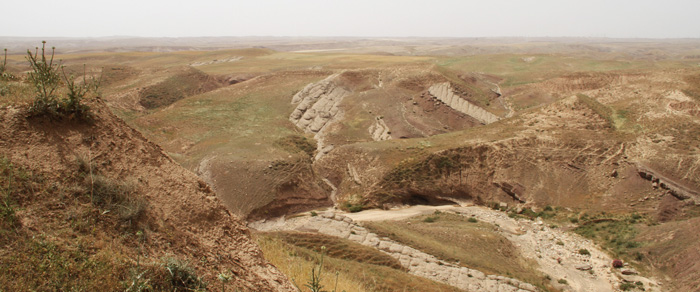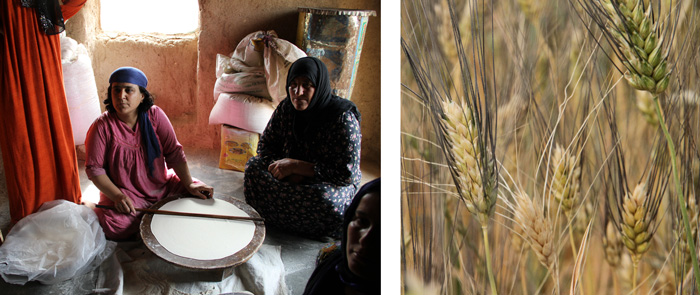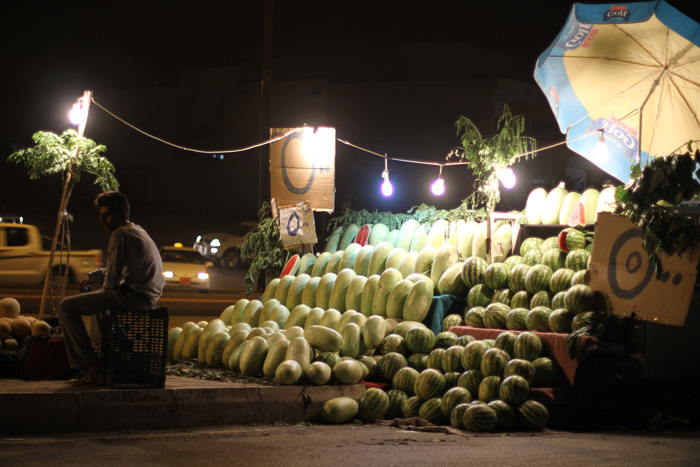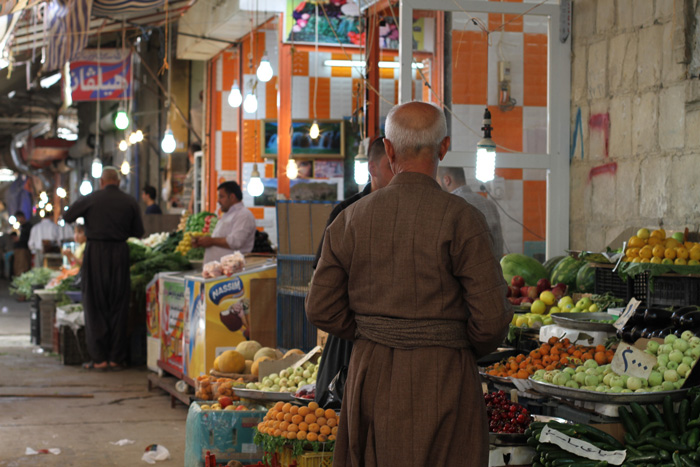A Day Exploring the Origins of Agriculture in Iraqi Kurdistan
 "No very remarkable antiquities yet, mainly milling stones, pestles, stone axes, and lots of flint and obsidian blades. Also enough grain to fill about half a dozen match boxes."
-An excerpt from a letter Robert Braidwood sent as he was excavating in Jarmo, Iraq in October 1950.
"No very remarkable antiquities yet, mainly milling stones, pestles, stone axes, and lots of flint and obsidian blades. Also enough grain to fill about half a dozen match boxes."
-An excerpt from a letter Robert Braidwood sent as he was excavating in Jarmo, Iraq in October 1950.
The morning begins in the Sulaimany Museum; a well groomed man carefully wiping clean a glass case in a dim corner of the museum. Inside the case is a small collection of artifacts from Jarmo, an archaeological site excavated in the 1950s that is said to be the world’s first farming village. After an interview (in Kurdish) with the museum’s director Kak Hashm, and a few portraits of the vases, figures and cutting tools found in Jarmo - we are off to the site itself. It’s on the road to Kirkuk.
We turn off the main road towards a seemingly empty landscape. Through the window of the Land Cruiser I can’t take my eyes off of the wheat and wild grasses that cover every inch of land not occupied by rocks or boulders. At first glance everything in sight comes in shades of dust; looking closer at the individual plants that make up the whole portrait other colors emerge: gold, burgundy, black, white, yellow and green. We pass Kani Sard a small (and shrinking) village; chickens, some goats, more wheat, more grasses, more rolling hills. And then we stop. Everyone gets out of the car and begins walking towards the horizon.
Suddenly we are on a cliff, around us there are several pits where grasses, the odd poppy, and thistles grow; this is the archaeological site untouched in the decades since its excavation. Below us is a valley, with another ridge across the valley; a shepherd grazes his goats and sheep. This is the land where wheat was first cultivated, and where livestock was first domesticated. Archaeologists from the Museum uncover some bits of bone in a cliff face- they say it is human. We walk among the overgrown holes, snapping photographs and absorbing the vastness of the earth and sky. A feeling of reverence takes hold of us all as we gently tread through this striking landscape. We pass the rows of a small wheat field on our way back to the car, beyond that, the land feels largely uncultivated. It is strange how a place with so much historical significance can feel so untouched.
 On the way back to town we stop at Kani Sard. Lack of water and electricity has driven more than half of the village’s population to the city in the past few years. There are about 5 families that remain; they invite us in. The women of the village are making bread. The flour comes in big bags marked “Switzerland;†and this in fact is what brought me to Iraq in the first place- the question of why the birthplace of agriculture must now import 80% of its food supply. And how people living not 2 miles away from where wheat was first domesticated some 10,000 years ago can now be making their bread from flour imported from the United States or Australia, rather than the fields next door.
On the way back to town we stop at Kani Sard. Lack of water and electricity has driven more than half of the village’s population to the city in the past few years. There are about 5 families that remain; they invite us in. The women of the village are making bread. The flour comes in big bags marked “Switzerland;†and this in fact is what brought me to Iraq in the first place- the question of why the birthplace of agriculture must now import 80% of its food supply. And how people living not 2 miles away from where wheat was first domesticated some 10,000 years ago can now be making their bread from flour imported from the United States or Australia, rather than the fields next door.
I have been to Iraq three times now exploring these issues for a film and website about agriculture in Iraq and Iraqi Kurdistan (www.iraqiseedproject.com). Depending on who you ask, there are many answers ready to address these questions: the government does not offer enough support to the farmers, cheap imports make it impossible for local farmers to compete in a market of cheap imports, no one wants to farm anymore, years of drought and war, lack of infrastructure and farming equipment. The corrective measures tend towards large industrialized solutions - bigger farms, genetically modified crops, chemical fertilizers. There is no support for the small farmers.
 The agricultural legacy of the region is apparent in all of our kitchen gardens - the beets, onions, cucumbers, grapes, melons, garlic, lettuce, spinach, bean - even the wild grasses (distant relatives of domesticated wheat) that creep into the garden beds - all originally come from Iraq and the surrounding area.
The agricultural legacy of the region is apparent in all of our kitchen gardens - the beets, onions, cucumbers, grapes, melons, garlic, lettuce, spinach, bean - even the wild grasses (distant relatives of domesticated wheat) that creep into the garden beds - all originally come from Iraq and the surrounding area.
The region should be a treasure trove of biodiversity - interesting heirloom varieties of the common vegetables we know and love like family, but instead the produce choices at the markets look a lot like the rest of the world: shiny oranges, tasteless apples, tomatoes, cucumbers and potatoes that all look the same. They are imported from Iran, Turkey or Syria. Consumers notice the changes - how not so many years ago there were 20 different melon varieties every June and now there are only 3 - but there is not a system of support to combat these losses.
Because Iraq is the birthplace of so many important crops their disappearance feels even more poignant, but it is a phenomenon we are becoming too familiar with in every corner of the globe. Often it is the small farmer and home gardener who preserves the cherished varieties of our ancestors, we may do this for our personal family histories, or for the common history we all share.

Photo credits: Emma Piper-Burket

